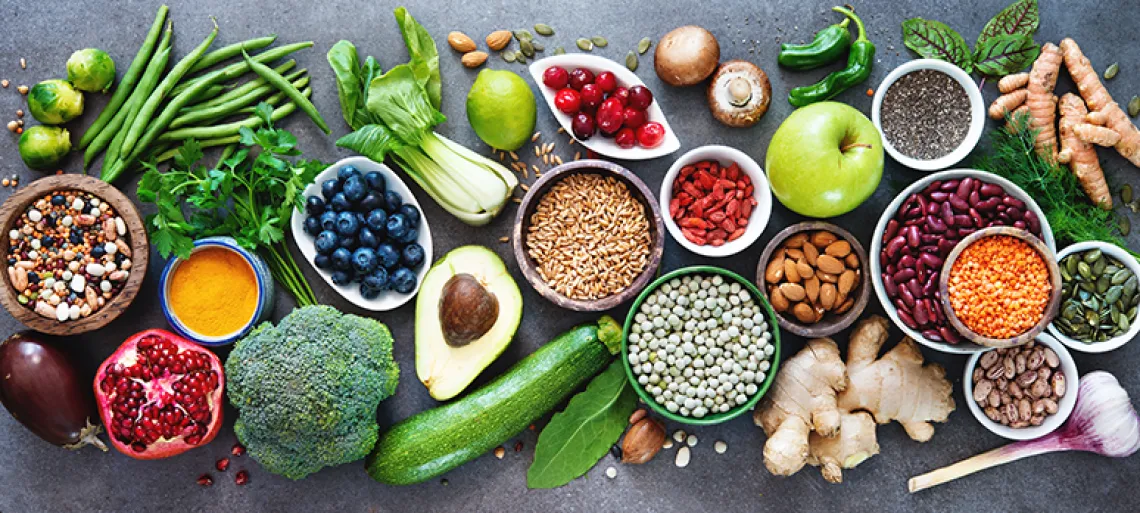Good Nutrition on a Budget

In a tough economy, many Americans reduce the amount of money they spend on food. But at what cost to their health?
Research has determined a strong correlation between obesity, unhealthy eating habits and lower economic status. As the price of food rises, many Americans may sacrifice nutrition for dollars.
It is a myth that eating healthy has to cost more, or that it is necessary to shop at high-priced health food stores for the best items. Learning to become a savvy shopper allows even the most budget-conscious individuals to make healthy choices.
Ways to Shop Well
In order to get the most nutrient bang for your buck, shop the perimeter of the grocery store, where the fresh produce, whole grains and low-fat dairy are located.
Avoid the inner aisles, packed with high-fat and high-calorie snack foods.
While saving money, it is possible to gain more sustenance and nutrition. For example, while a snack-size bag of potato chips might cost a reasonable 99 cents, a medium-size apple or snack-size bag of unsalted nuts can be purchased at the same price, or even a little less.
Many healthy foods can be found for under $1. Here are some suggested items to grab instead of a discounted high-fat or high-calorie food:
- Apples: These are inexpensive to buy, come in several varieties and are packed with filling fiber.
- Bananas: When buying a bunch, purchase a couple ripe to eat soon, and then buy the rest of the
- bunch green. This way fewer bananas go to waste. Enjoy in yogurt, cereal and smoothies.
- Beets: A can typically costs less than $1, and beets are packed with vitamins and minerals. Eat them as a side dish, or shred them into salads and stir-fries.
- Broccoli: One of the cheaper fresh vegetables, broccoli can be eaten raw with low-fat yogurt dip, added to salads, steamed for a side dish or used in stir-fry.
- Coffee: Research shows that moderate coffee consumption is heart-healthy. Making coffee at home is one of the biggest money-saving strategies and cuts costs down to about 50 cents per serving.
- Eggs: A source of complete protein and one of the cheapest, costing about $1 for a half dozen. Use for omelets, sandwiches and as an addition to salads.
- Garbanzo beans (chickpeas): Packed with fiber, these are great sprinkled on salads, added to soups or made into hummus spread. While a can costs less than $1, purchasing a bag of dry beans is the cheapest route.
- Kale: One of the cheapest greens to be found in the produce section; it is high in beta-carotene, vitamins C and K, and contains 7 percent of calcium per serving.
- Milk: Provides essential calcium and vitamin D – still a great source of nutrition at less than $1 per serving.
- Nuts: Instead of purchasing them in tins or glass containers, peanuts, walnuts and almonds are less expensive when bought in the shell. They are a good sources of healthy fat and protein.
- Oats: Typically a low-cost item, oats are high in fiber and proven to help reduce cholesterol. Beyond breakfast, eat as a snack, add in batters for cookies, or add as a coating for chicken or eggplant.
- Potatoes: An inexpensive baked potato with the skin is a low-calorie, good source of vitamin C, potassium and fiber. Sweet potatoes and yams are also good choices.
- Sardines: Inexpensive cans pack a ton of nutrition for a little fish, and they contain very little mercury. Toss into salads, eat on whole-wheat crackers or top on pizza.
- Spinach: Skip the pre-washed and bagged options. Save money by grabbing a fresh bundle in the produce section, or get a canned or frozen alternative. Spinach is a very healthy vegetable that is great on sandwiches, pizza or omelets, or blended into smoothies.
- Tofu: Avoid the higher-priced soy burgers and pre-seasoned meat substitutes. Instead, use bulk tofu as an inexpensive vegetarian protein source that takes on the flavor of anything that it is added to. Season your own for the most cost-effective option.
- Watermelon: For a low-calorie sweet treat, it is possible to enjoy watermelon for less than $1 per serving.
- Wild rice: Buy it in bulk or a box. It has a nutty flavor and is more nutritious than white rice.
Resources
Nutrition.gov
National Institutes of Health
©2023 ComPsych ® Corporation. All rights reserved. This information is for educational purposes only. It is always important to consult with the appropriate professional on financial, medical, legal, behavioral or other issues. As you read this information, it is your responsibility to make sure that the facts and ideas apply to your situation.

